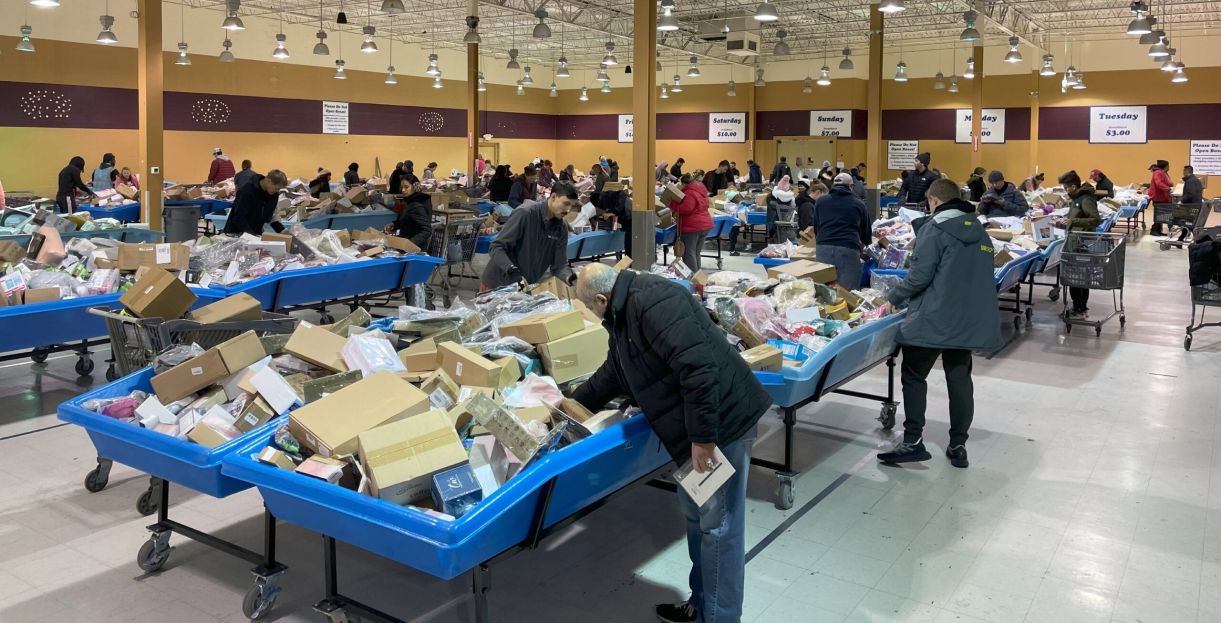What the Heck is Going on With These Liquidation Stores, Bin Stores, and Clearance Stores

The secondary retail market, often referred to as the liquidation market, is an interesting little industry on the rise. A few years ago you used to see a few here and there and nowadays they feel like they are everywhere. These stores manage to sell really good products at significantly reduced prices. It’s made possible due to excess inventory, returns, or discontinued items. The average person would be SHOCKED at how many products are buried, burned and given away because there is no shelf space or warehouse shelves to store them on. That benefit to bargain shoppers and the environment is massive. Here’s a closer look at how this market operates, how suppliers source products, and its environmental impact, market size, and future predictions.
How the Secondary Retail Market Works
Liquidation stores and similar outlets operate by purchasing excess inventory, customer returns, and unsold goods from retailers and manufacturers. These products may originate from major retailers, which often need to clear out inventory to make way for new products. *a little sidenote, approximately 5% of products actually sell out. This means, almost every producdt you see on a shelf today will not sell out and will not be on that shelf in a year.
This creates a pipeline of goods that can be sold at lower prices, providing:
- Cost-Effective Shopping: Consumers can find high-quality items at a fraction of the original retail price, making it an appealing option in economically tough times.
- Inventory Cycling: Retailers can cycle out outdated or excess stock while minimizing losses, benefiting both consumers and suppliers.
Sourcing Products
The process of sourcing products for liquidation stores begins with major retailers assessing their inventory and identifying items that need to be cleared. Here’s how it typically works:
- Returns and Overstocks: Retailers often face a high number of returns, especially from online purchases. Products that are returned but remain in sellable condition are often routed to liquidation markets. Similarly, overstocks from seasonal sales or promotional events also become available.
- Brokers and Liquidators: Once retailers identify excess inventory or returns, they may engage liquidators or brokers who specialize in purchasing these goods. Companies like SkidCity.ca and Liquidation.com connect retailers with liquidation buyers.
- Bulk Purchases: Liquidators purchase goods in bulk and sell them to smaller retailers or directly to consumers. These goods can then be resold at a greater markup, although still at prices below MSRP (Manufacturer's Suggested Retail Price).
- Repackaging and Reselling: Some liquidation stores buy pallets or truckloads (or skids) of returned goods or excess inventory and sell them in bulk or through bin-style stores, where consumers sift through bins to find deals.
Environmental Impact
The secondary retail market has significant environmental implications, both positive and negative:
- Waste Reduction: By diverting excess inventory and returned items from landfills, liquidation stores play a role in reducing waste. According to the Environmental Protection Agency (EPA), approximately 75% of waste in the U.S. is recyclable or compostable, highlighting the need to manage consumption and waste differently.
- Sustainability: These stores promote a circular economy by encouraging the reuse of products. As consumers become more environmentally conscious, the demand for overstock and second hand goods continues to increase.
- Potential Issues: However, not all liquidation sales are eco-friendly. The process of transporting goods and the possibility of products being near-end-of-life or damaged can contribute to environmental footprints. Retailers and liquidation businesses are increasingly working to improve sustainability practices.
Market Size and Economic Impact
The secondary retail market is significant, contributing to a larger portion of the retail industry. According to a report by Grand View Research, the global liquidation market was valued at approximately $50.3 billion in 2020 and is projected to grow, driven by increased e-commerce returns and the growing popularity of discount shopping.
- Economic Accessibility: In times of economic hardship, such as during recessions or the COVID-19 pandemic, liquidation stores become vital for consumers needing affordable goods. The slowing of the economy has led to increased interest in budget-friendly shopping solutions, making these stores an attractive option.
- Employment Opportunities: Liquidation stores also create jobs by employing people for sourcing, sales, management, and logistics, contributing to local economies.
Predictions from Industry Experts
As the secondary retail market continues to evolve, industry experts offer various predictions:
- Increasing Popularity: According to Mark Cohen, Director of Retail Studies at Columbia Business School, "The growth trajectory of liquidation stores will continue to rise as more consumers seek budget-friendly options and as retailers adapt to changing consumer behavior."
- Technological Integration: Experts suggest that technology will play a crucial role in optimizing operations. Companies are expected to leverage data analytics to improve inventory management and tailor their offerings to consumer preferences.
- Sustainability as a Selling Point: Deloitte’s 2021 Global Powers of Retailing report notes that sustainability will continue to influence consumer purchasing decisions. Liquidation stores that highlight their eco-friendly practices and repurposing of goods may gain a competitive edge.
The Wrap Up
That’s probably a lot to digest. What we have learned is that the liquidation market is growing. Several factors contributing to this is the struggling economy, inflation, and people becoming more aware of the environmental impact or the retail industry. It’s hard to know what the long term strategy is for this industry and we don’t know how the major retailers will react if this starts to effect their bottom line. Since the rise of liquidation economy Costco has growth 30%,, Target 27%, and Walmart 24%. So it doesn’t seem like this fast growing industry is hurting them in anyway. Stay tuned and we will continue to share as we learn more.

